A substance (P) releases a gas (Q) on reaction with H2O. (Q) decolourises Br2 water. (P) may be
BeC2
Be2C
Al4C3
Mg2C3
The correct Answer is:A, D
Step by step video, text & image solution for A substance (P) releases a gas (Q) on reaction with H_(2)O. (Q) decolourises Br_(2) water. (P) may be by Chemistry experts to help you in doubts & scoring excellent marks in Class 11 exams.
Updated on:21/07/2023Topper's Solved these Questions
- S-BLOCK ELEMENTSBook:NARAYNAChapter:S-BLOCK ELEMENTSExercise:Comprehension Type question
Explore 5 Videos
- S-BLOCK ELEMENTSBook:NARAYNAChapter:S-BLOCK ELEMENTSExercise:Passage 2
Explore 1 Video
- S-BLOCK ELEMENTSBook:NARAYNAChapter:S-BLOCK ELEMENTSExercise:LEVEL-V
Explore 59 Videos
- REDOX REACTIONBook:NARAYNAChapter:REDOX REACTIONExercise:Exercise -4
Explore 114 Videos
- SOLID STATEBook:NARAYNAChapter:SOLID STATEExercise:LEVEL-V
Explore 122 Videos
Similar Questions
An organic compound 'P' with jmolecular formula C8H8O forms an organic red ppt with 2,4−DNP gives yellow ppt. on heating with I2 in presence of NaOH. It neither reduces tollen's or fehling reagent nor does it decolourise Br2 water or baeyer's reagent. On drastic oxidation with chromic acid (H2CrO4) it gives an acid (Q) having molecular formula C7H6O2.
Q. Identify compound P:
View SolutionAn organic compound 'P' with jmolecular formula C8H8O forms an organic red ppt with 2,4−DNP gives yellow ppt. on heating with I2 in presence of NaOH. It neither reduces tollen's or fehling reagent nor does it decolourise Br2 water or baeyer's reagent. On drastic oxidation with chromic acid (H2CrO4) it gives an acid (Q) having molecular formula C7H6O2.
Q. Pdil.өOH−−−→ΔSCH3MgBr(1 mole)−−−−−−−−−−−−→H3O⊕
No. of stereoisomer in the final product T:
View Solution
Knowledge Check
P and Q are isomers of dicarboxyhc acid C4H4O4 .Both decolourize Br2/H2O On heating, P forms the cyclic anhydride.
Upon treatment with dilute alkaline KMnO4, P ass well as Q could produce one or more than one from S. T and U.

Compounds formed form P and Q are, respectively.AOptically active s and optically active pair (T,U)BOptically active S and optically inactive pair (T,U)COptcally actve pair (T. U) and optically active SDOptically inactive pair (T. U) and optically inactive SP and Q are isomer of dicraboxylic acid C4H4O4 Both decolourixe Br2/H2O. On heating , P forms the cyclic anhydride. Upon treatment with duilute alkaline KMnO4. P as well a Q could produce one or more than one from S,T and U.
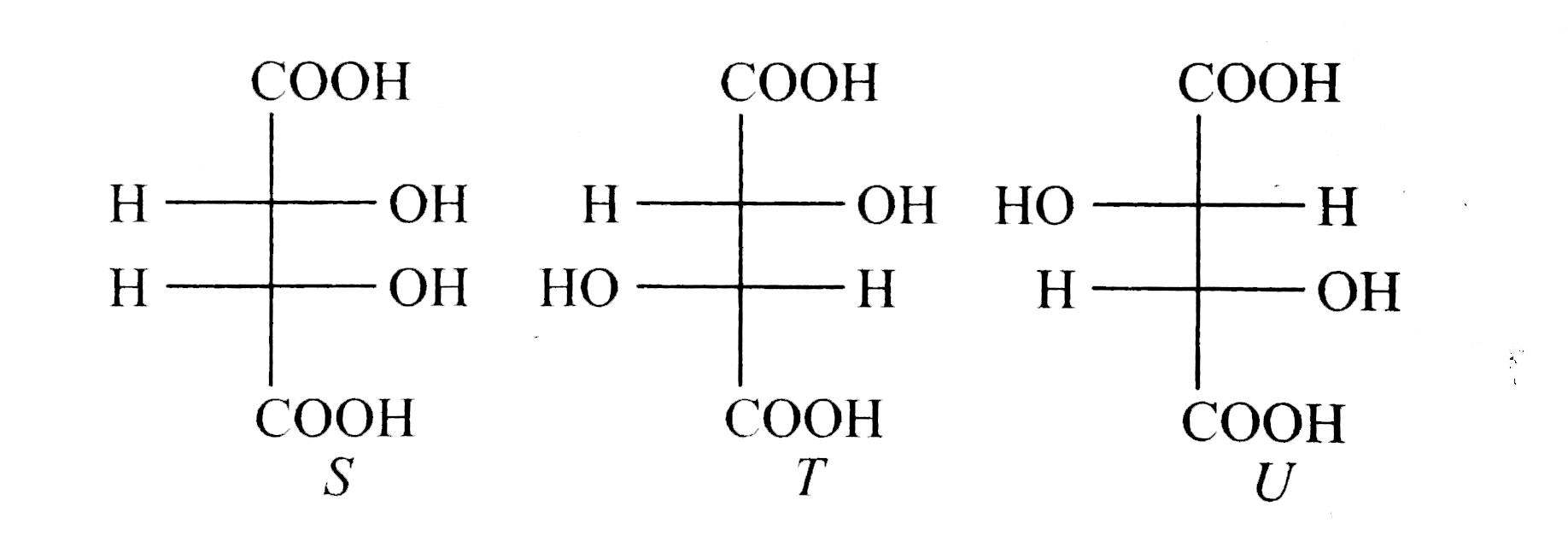
In the following reaction sequences V and W are respectively
QH2/Ni−−−→ΔV
 A
A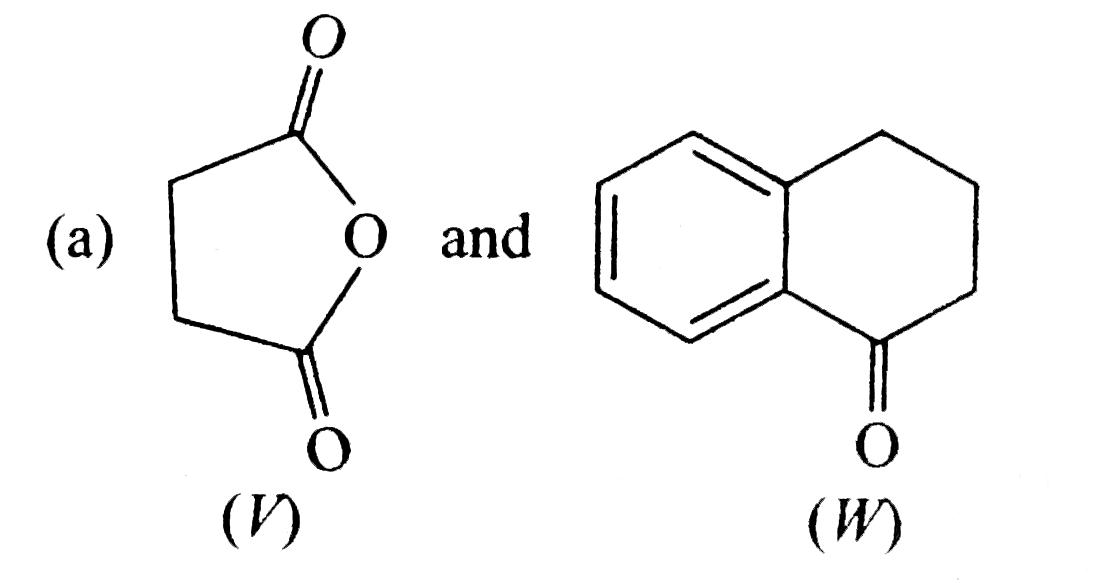 B
B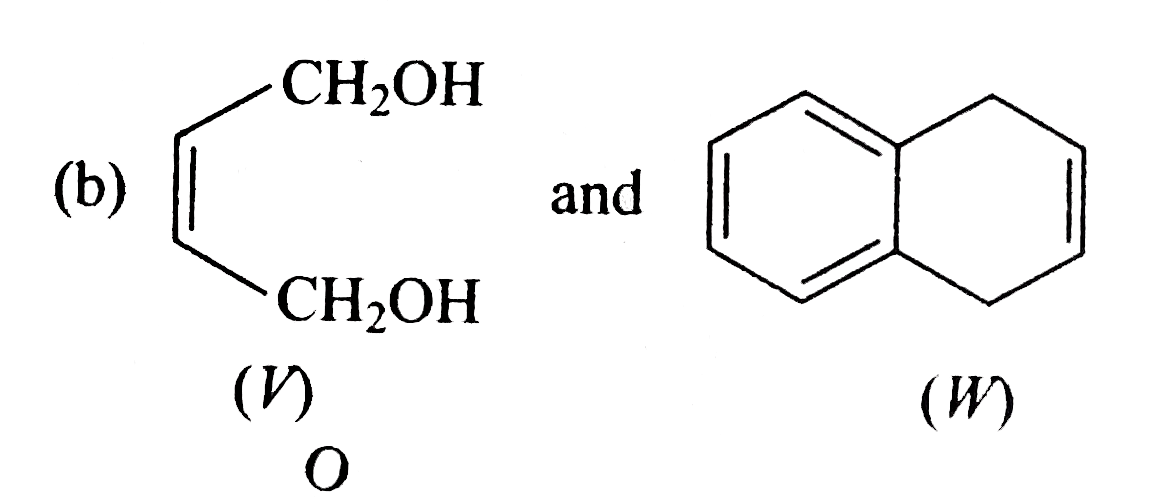 C
C D
D
P and Q are isomers of dicarboxylic acid C4H4O4. Bothdecolorize Br2/H2O. On heating, P forms the cyclic anhydride. Upon treatment with dilute alkaline KMnO4,P as well as Q could produce one or more than one forms S,T and U.
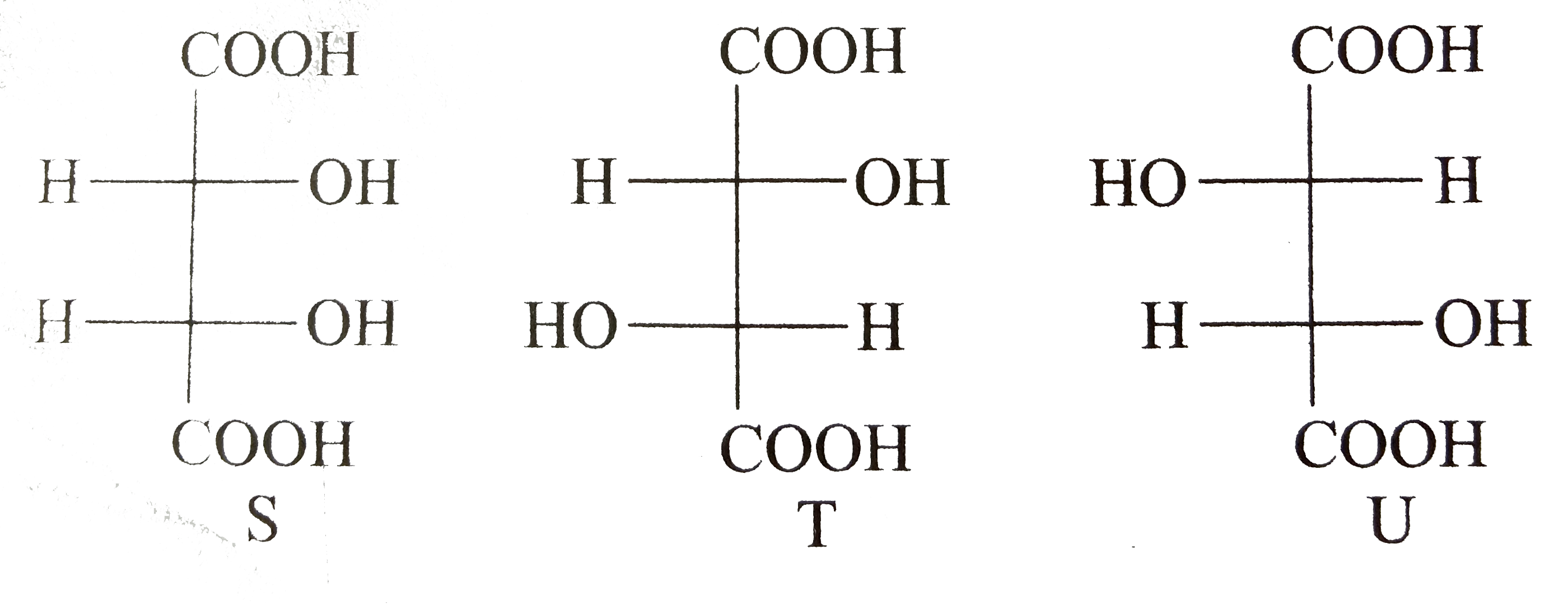 Compounds formed from P and Q are, respectivelyAoptically inactive pair (T,U) and optically inactive SBoptically active pair (T,U) and optically active SCoptically inactive S and optically inactive pair (T,U)Doptically active S and optically inactive pair (T,U)
Compounds formed from P and Q are, respectivelyAoptically inactive pair (T,U) and optically inactive SBoptically active pair (T,U) and optically active SCoptically inactive S and optically inactive pair (T,U)Doptically active S and optically inactive pair (T,U)
P and Q are isomer of dicraboxylic acid C4H4O4 Both decolourixe Br2/H2O. On heating , P forms the cyclic anhydride. Upon treatment with duilute alkaline KMnO4. P as well a Q could produce one or more than one from S,T and U.

Compounds formed P and Q are, respectively
View SolutionP and Q are isomers of dicarboxylic acid C4H4O4. Both decolorize Br2/H2O. On heating, P forms the cyclic anydride.
Upon treatment with dilute alkaline KMnO4, p as well as Q could produce one or more than one from the S,T and U
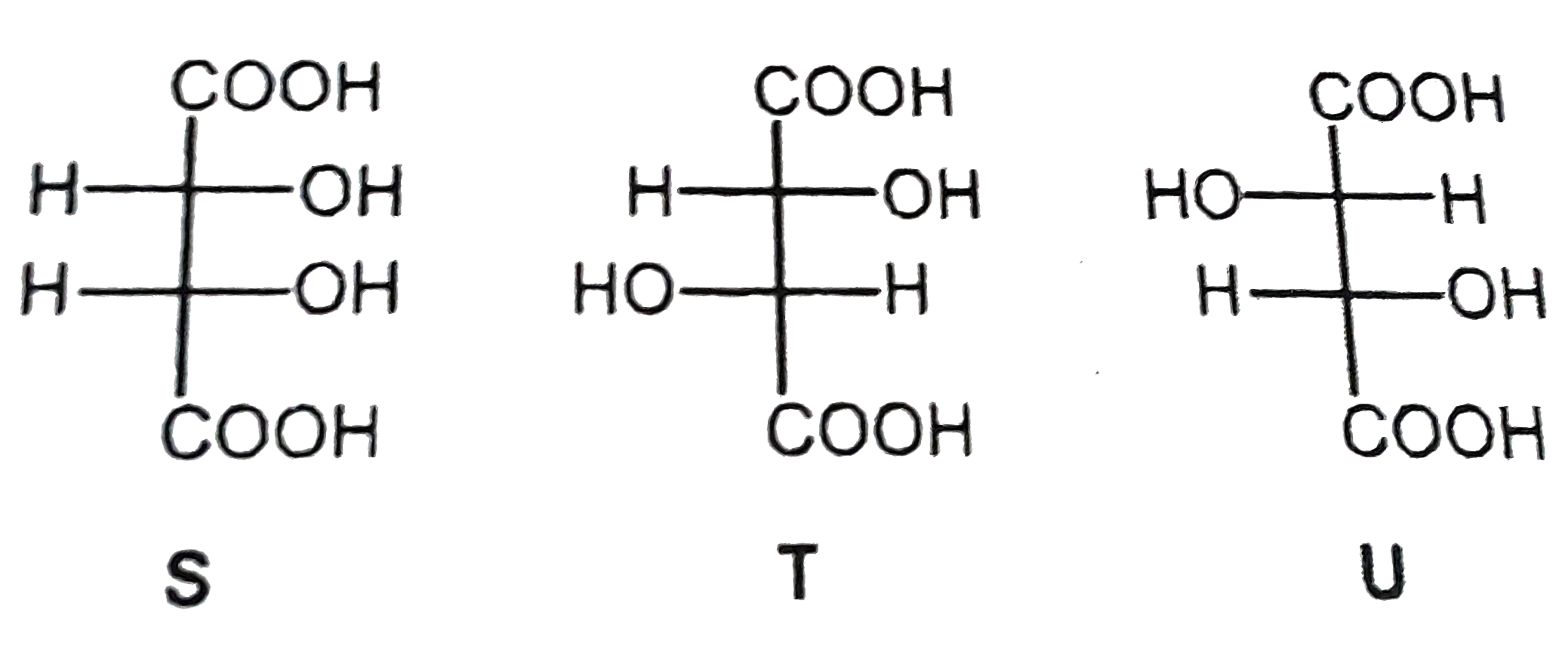
Compounds formed from P and Q are, respectively:
View SolutionP and Q are isomers of dicarboxylic acid C4H4O4. Both decolorize Br2/H2O. On heating, P forms the cyclic anydride.
Upon treatment with dilute alkaline KMnO4, p as well as Q could produce one or more than one from the S,T and U

In the following reaction, sequences V and W are respectively.

View SolutionWhich of the following examples demonstrate homogeneous catalysis?
(P) Pt(s) catalyzing the reaction of O2(g) with CO(g)
(Q) Cl2(g) catalyzing the decomposition of O3(g)
(R ) H2O2(aq) decomposition catalyzed by Br2(aq)
View SolutionCompound 'P'(C10H12O) evolves H2 gas with Na metal. It reaches with Br2/CCl4 to give 'Q'(C10H12Br2O). With I2NaOH it forms iodoform andan acid 'R'(C9H8O2). 'P' has geometrical and optical isomers. The sturcture of 'P' and 'R' should be
View Solution